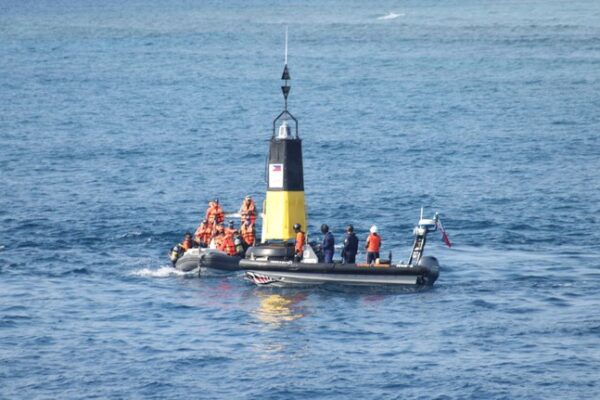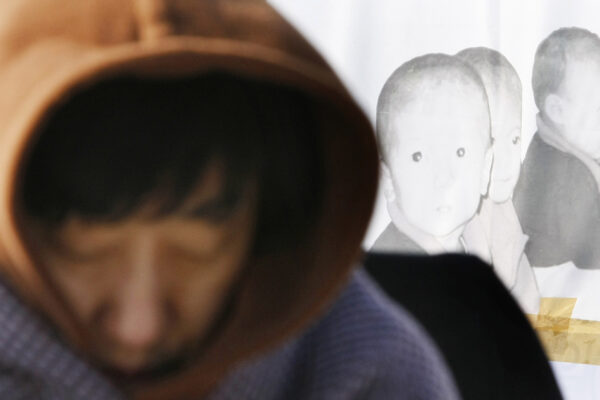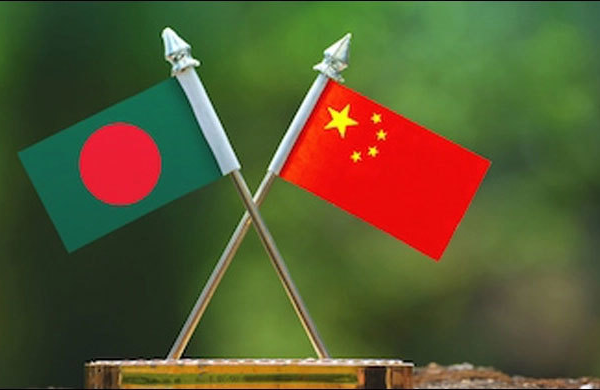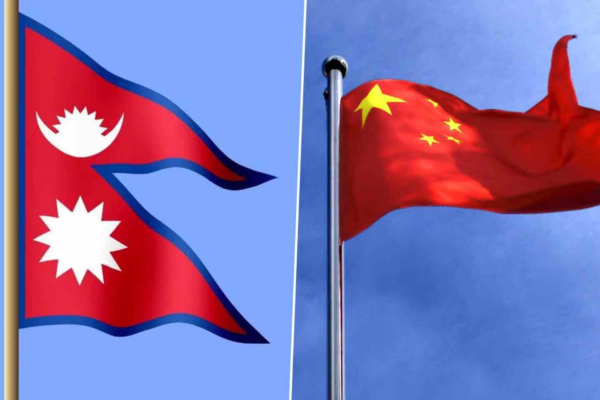Download the report: Link Nepal officially joined the Belt and Road Initiative (BRI) in 2017, marking a significant milestone in its collaboration with China. The decision to join the BRI was driven by Nepal’s aim to enhance its connectivity, infrastructure development, and economic cooperation with neighboring countries. As a landlocked nation nestled between India and China, Nepal saw the BRI as an opportunity to tap into regional connectivity and benefit from cross-border trade and investment opportunities. Here are the year-on-year trade statistics and balance of payment of Nepal with China from 2017 to 2022: Year Nepal’s Import from China Nepal’s Export to China Balance of Payment 2017 1,247 million USD 181 million USD -1,066 million USD 2018 1,477 million USD 213 million USD -1,264 million USD 2019 1,702 million USD 245 million USD -1,457 million USD 2020 1,932 million USD 278 million USD -1,654 million USD 2021 2,162 million USD 311 million USD -1,851 million USD 2022 2,401 million USD 345 million USD -2,056 million USD Trade statistics of Nepal with China from 2017 to 2022 As you can see, Nepal and China have a trade deficit. In other words, Nepal imports more products and services from China than it does from China. In recent years, the trade gap has been widening. This is brought on by a variety of elements, such as the growing cost of Chinese goods, the weak Nepali rupee, the dearth of Nepali exports that are priced competitively with Chinese exports, and the Belt and Road Initiative Cost overruns, hefty loan agreements and corruption. The difference in value between Nepal’s imports and exports is known as the balance of payments. In recent years, the payment balance has been negative. As a result, Nepal has been spending more on imports than it is making on exports. The BRI is the root cause of the negative balance of payments. Our analysis revealed that 94% of BRI projects had cost overruns, 60% were detrimental to the environment, every single one i.e. 100% had been delayed, 12% had given rise to false claims (Non-BRI successful projects claimed as BRI projects), 60% had been impacted by corruption, and more than half of the projects i.e 53% which are under construction or are completed had poor quality. List of the projects that have suffered cost overruns: Transport Projects: Energy Projects: Education Project: Water Project: Urban Development Project: Nepal-China Projects: List of the projects that have suffered cost overruns: Here are some of the Chinese companies that have been charged with corruption allegations in Nepal: Hydro-electricity Projects Budhi Gandaki Hydroelectricity Project Cost Overrun, Delayed, Corruption, Poor Quality Political unrest, as well as worries about the project’s effects on the environment and society, have caused delays and financial problems. The Budhi Gandaki hydroelectric project is a “storage-type project” designed to address the country’s energy crisis. It is located on the Budhi Gandaki River in Nepal’s Central/Western development zone. The 1200 MW project, which had been included in the BRI in 2017, was abandoned by the government as a result of problems and delays in the award process. The project is being constructed by the China Gezhouba Group Corporation (CGGC) and is expected to cost $2.5 billion. However, the project has been plagued by cost overruns and delays. In 2018, the project’s estimated cost was increased to $3.5 billion. In 2020, the project’s completion date was pushed back from 2022 to 2024. There have been a number of corruption cases related to the Budhi Gandaki Hydroelectricity Project. In 2019, the Nepali government filed a corruption case against the China Gezhouba Group Corporation (CGGC). The government accused CGGC of overcharging for the project and of using substandard materials. The case is still pending in court. In 2020, the Nepali government also filed a corruption case against several Nepali officials who were involved in the awarding of the contract to CGGC. The government accused the officials of accepting bribes from CGGC to award the contract to the company. The case is also still pending in court. The corruption cases related to the Budhi Gandaki Hydroelectricity Project have raised concerns about the transparency and accountability of the project. The cases have also cast a shadow over the future of the project. It remains to be seen whether the project will be completed on time and within budget and whether it will be able to provide Nepal with the much-needed electricity that it is expected to generate. https://web.archive.org/web/20230427155915/https://bghep.gov.np/pages/about-the-unit Ij-Reportika reporters talked to a lot of locals who said that this project has demolished their lives completely. Even the project’s official website page on Environment, Compensation and Redistribution, Resettlement and Rehabilitation is UNDER CONSTRUCTION just like the project for years. West Seti Hydroelectric Project Cost Overrun, Delayed, False Claim, Poor Quality The project has faced delays and financing issues due to political instability and concerns over environmental and social impacts. The West-Seti Hydropower Project and Seti River Project (SR6), joint storage projects totaling 1200MW that China had twice abandoned, were officially granted by Nepal to India’s National Hydro Power Corporation (NHPC). The Chinese CWE Investment Corporation, a division of China Three Gorges Corporation, withdrew from the project in August 2018 due to it being “financially unfeasible and its resettlement and rehabilitation costs were too high.” Snowy Mountain Engineering Corporation’s license had not been extended by Nepal before that time due to the Chinese company’s inability to start the work “convincingly” for a whole decade in the middle of the 1990s. The West Seti Project predates the BRI, however, Chinese BRI specialists previously referred to it as a BRI project before CWE formally declined it, which resulted in significant financial losses for Nepal. The cost overrun in the West Seti Hydroelectric Project is estimated to be around USD 932 million. The project was initially estimated to cost USD 2.5 billion, but the cost has increased due to several factors. Upper Tamakoshi Hydropower Project Environment Damage, Cost Overrun, Delayed, Corruption, Completed, Poor Quality The Upper Tamakoshi Hydropower Project is a 456-megawatt…










